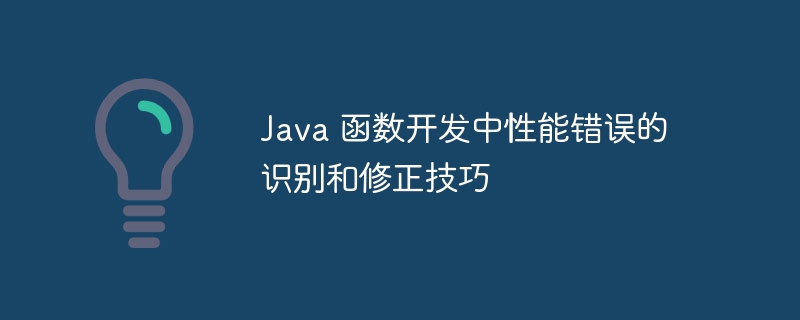Home >Java >javaTutorial >Tips for identifying and correcting performance errors in Java function development
Tips for identifying and correcting performance errors in Java function development
- WBOYWBOYWBOYWBOYWBOYWBOYWBOYWBOYWBOYWBOYWBOYWBOYWBOriginal
- 2024-05-01 10:21:02636browse
How to identify and correct Java function performance errors: Use profiling tools and monitoring function metrics to identify hot spots and bottlenecks. Avoid unnecessary loops and recursions and use caching mechanisms to optimize data access. Use non-blocking I/O operations, optimize data structure selection, and take advantage of multi-threading. Example: Optimize function performance by caching Fisher sequence calculation results, reducing exponential complexity to linear complexity.

Identification and correction skills of performance errors in Java function development
In Java function development, performance errors may have a negative impact on the application A significant impact on the program's responsiveness and overall user experience. It is critical to identify and correct these errors to ensure efficient execution of the function.
Identify Errors
- Use profiling tools such as JProfiler to identify hot areas and bottlenecks for specific functions.
- Monitor function metrics such as execution time, memory usage and cold start time.
- Conduct benchmark tests to compare the performance of different implementations or configurations.
Fix errors
- Avoid unnecessary loops and recursions, which are inefficient.
- Use caching mechanism to store calculation results and speed up subsequent access.
- Use non-blocking I/O operations to avoid blocking threads for long periods of time.
- Optimize data structure selection, such as using HashMap instead of LinkedList.
- Utilize multi-threading to take advantage of multi-core CPUs.
Practical Case: Optimizing the Fisher Sequence Function
Consider a simple Java function that calculates the nth number in the Fisher Sequence:
public int Fibonacci(int n) {
if (n <= 1) {
return n;
}
return Fibonacci(n - 1) + Fibonacci(n - 2);
}This function uses recursion, which will result in a large number of recursive calls and inefficiency for large n values. Optimization can be achieved by caching the previously calculated Fisher number:
public int Fibonacci(int n) {
if (n <= 1) {
return n;
}
int[] cache = new int[n + 1];
cache[0] = 0;
cache[1] = 1;
for (int i = 2; i <= n; i++) {
cache[i] = cache[i - 1] + cache[i - 2];
}
return cache[n];
}By using cache, the function can reduce the calculation time of the nth number in the Fisher sequence from exponential complexity (O(2^n)) to Linear complexity (O(n)).
The above is the detailed content of Tips for identifying and correcting performance errors in Java function development. For more information, please follow other related articles on the PHP Chinese website!

